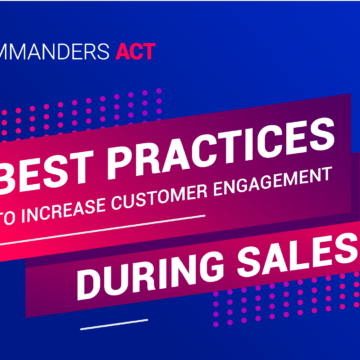What is a DMP?
13/10/2016 |

The ongoing digital transformation calls for major organizational changes within companies. Silo-management, which had been the norm until recently, is being challenged in favor of a user-centered global strategy. And in a user-centered organization, profile unification is indispensable, meaning that using a DMP is necessary as well.
The term DMP is being used extensively as time goes by, and not without reason: at a time when Big Data is a recurrent topic and questions surface, DMPs offer the possibility to manage and activate collected data. More important is the fact that they allow companies build data equity.
DMP means Data Management Platform; it usually refers to a platform provided as SaaS that is used to gather, centralize, generate and activate client or lead-related data. In a few words, it is a “super data base” populated by data coming from many sources and working in real time. The idea behind this type of platform is to reunite all the data bases that were managed separately and unifying them in a single data base. And even though it is a term many marketers dread, there is not a single one of them who doesn’t dream about having their own DMP.
Uses of Data Management Platforms are not limited to data storage and centralization. The most attractive feature is that they let you activate data and use it. There are plenty of different use cases.
What data is considered?
Data considered by DMPs are of many types, including browsing information (product descriptions, search queries, abandoned baskets), exposure to ads (viewed and clicked banners), offline info (TV, catalogs), CRM data (profile, CSP), voice of customer, second and third party data.
All this information allows knowing clients better but it is not its sole purpose. Every piece of it must allow action to be taken and become a trigger: recommending products, prompting basket abandoners to finish their purchase, etc.
What can you do with a DMP?
There are many DMP types. Some of them are first or third party-oriented, some others are intended for publishers or advertisers. But whatever the brand, the need remains the same: making the most of collected data.
Setting up a DMP is done through a few steps. The first one, in terms of data management, consists in collecting normalized omnichannel cross-device data on all of a client’s websites. Step two consists in unifying profiles prior to sending more complete and qualitative data to other systems. Once set-up, a DMP will significantly improve marketing operations thanks to better targeting, personalized browsing experiences and offers, more appropriate advertising investments (drop in acquisition costs thanks to optimized targeting, better use of retargeting) and a better management of sales pressure.
Data Management Platforms can be used on all levers, from emailing to in-person store visits, as well as in personalized, real-time offers displayed on a brand’s website. There are multiple possibilities:
- Focusing on a clienteling approach when customers walk into the store.
- Optimizing online acquisition costs by adjusting marketing pressure in favor of leads.
- Using the right sales activities to increase conversions.
- Limiting the appearance of chat windows and saving them for specific profiles.
- Switching from statistical testing to segmented testing.
- Setting up audience extensions based on discriminatory models.
- Excluding clients from certain commercial operations.
- Issuing follow-up messages to clients that abandoned their basket right before a conversion took place.
- Displaying a pop-in the moment a user intends to leave the site to prevent them from doing so.
- Simplifying payment steps for VIP clients or issuing follow-up messages for clients who have not yet issued any payment.
DMPs also let you create better segments by targeting leads whose profiles are similar to your clients’ (audience extension or lookalikes), following a successful campaign.
DMPs are also used as part of acquisition and customer loyalty development strategies: you can target users who, according to browsing data, seemed to be particularly interested in a specific product category, even though no purchase was ever made on the site.
Segmentation, targeting, service personalization through more relevant communications
Data collection on any device and channel will give you a comprehensive and detailed 360° vision of every individual. The aims of using DMPs are not limited to achieving a better segmentation, as what is sought is to take it as far as possible in terms of marketing personalization. It is all about unifying profiles, defining a segmentation strategy and making sure each segment is receiving a relevant message.
Analyzing the purchase history of a given individual is not enough to determine their needs and wishes. However, by cross-referencing browsing data, search queries and offers they reacted to, you can begin drafting comprehensive user profiles. You will have a clearer view of their interests and be able to anticipate their underlying needs. You will also improve the relevance of your communications and the performance of your advertisements while being very responsive.
Client Experience, Marketer 2.0’s Grail
Improving client knowledge continually and on a regular basis is key to optimizing one’s marketing strategy in real-time. Thanks to data collection and treatment, client knowledge is deepened.
Better client knowledge means a better user experience, provided data is correctly used, by the means of:
- Relevant targeting.
- Real-time personalized offers according to on-site behavior and data.
- A significant cut in inappropriately targeted advertisements.
- E-mailings based on searches conducted on the site.
Whatever the industry, marketers must succeed: they have to send the right message to the right audience, ensure campaigns are effective and do their best to guarantee traffic to the site converts. This entails optimizing communications, segmentation, targeting and message personalization permanently.











